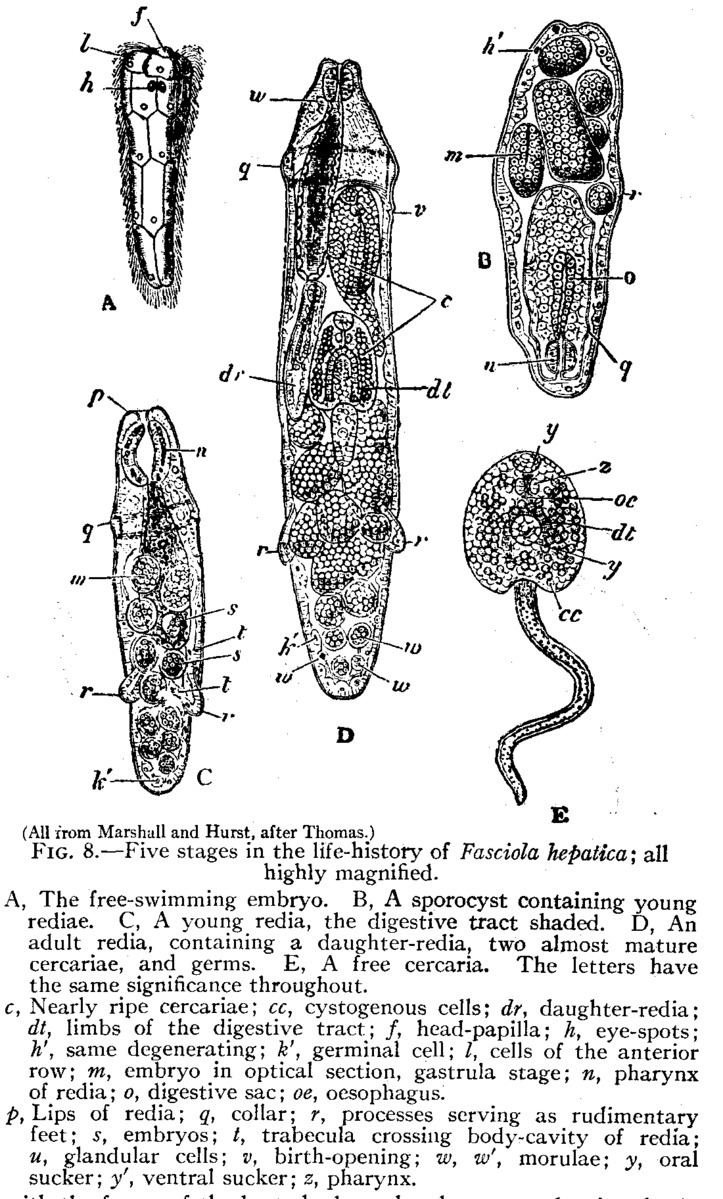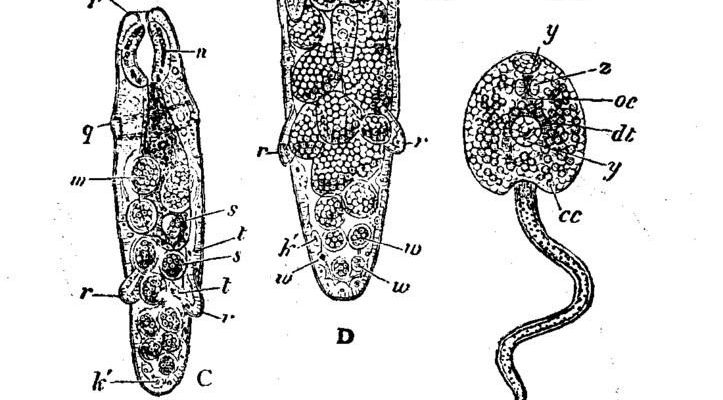
Imagine a restaurant where various ingredients come together to create a delicious dish. Each ingredient has its own role, just like how trematodes interact with various microfauna. These interactions can influence everything from the health of their hosts to the balance of their environments. So, let’s dive deeper into the ways trematodes fit into their ecosystems and how they interact with other small creatures.
What Are Trematodes?
Trematodes are fascinating little creatures. They’re flatworms that typically have a complex life cycle, often involving multiple hosts, such as snails and fish. Think of them as hitchhikers, moving from one organism to another while causing various effects. These flatworms can be found in a range of environments, from freshwater lakes to saltwater oceans.
Trematodes can cause diseases in their hosts, but they’re also essential players in their ecosystems. They can affect the health of fish populations, influence the behavior of their hosts, and even impact the larger food web. By understanding trematodes, we can get a clearer picture of the overall health of an aquatic ecosystem.
The Life Cycle of Trematodes: A Journey Through Hosts
The life cycle of a trematode is a captivating story of survival and adaptation. It typically begins when a mature trematode lays eggs in the body of a host, often a fish or a mammal. These eggs hatch into larvae, which then need to find a suitable intermediate host, usually a snail. This is like a relay race, where each stage counts toward the final goal of infecting a definitive host.
Once the larvae infect the snail, they undergo further development, eventually leaving the snail to find a new host, often a fish. This journey is not just a simple migration; it’s a strategic move that helps the trematode thrive. By jumping from one host to another, trematodes can manipulate their hosts’ behavior. For instance, a fish infected with a trematode may become more vulnerable to predators, which ultimately helps the trematode reach its ultimate goal.
Interactions With Other Microfauna
Trematodes don’t operate in isolation. They interact with various other microfauna, such as bacteria, protozoa, and other parasites. Think of this relationship as a web of connections where each strand can affect the others. These interactions can be both beneficial and detrimental, depending on the circumstances.
For example, trematodes can influence the populations of their intermediate hosts. If trematodes infect too many snails, it can lead to a decline in the snail population, which, in turn, affects the species that rely on snails as a food source. This ripple effect can have significant impacts on the entire ecosystem, where each organism plays a part in maintaining the balance.
Influence on Bacterial Communities
Bacteria often colonize the same environments where trematodes operate, creating a fascinating dynamic. The presence of trematodes can change the composition of bacterial communities in a host. Some studies suggest that when trematodes infect a fish, they may alter the fish’s gut microbiome. This alteration can have several consequences, including affecting the fish’s immune response and overall health.
Here’s a simple analogy: think of bacteria as the chefs in a kitchen. If a new kitchen manager (the trematode) comes in and changes the recipes, the food produced will be different. This change might make the food (or, in this case, the health of the fish) less palatable to some diners (predators) while benefiting others.
The Role of Trematodes in Food Webs
Trematodes play a complex role in food webs. They can serve as a food source for predators, like birds and larger fish, which helps keep the ecosystem in balance. When predators eat infected hosts, they also consume the trematodes, thus supporting the predator’s diet while regulating the trematode population.
However, this relationship can be tricky. If trematode populations grow unchecked, they might cause significant harm to their hosts, leading to fewer available prey for predators. It’s like a game of tug-of-war—if one side gets too strong, the balance tips, causing consequences throughout the ecosystem.
Co-evolution With Hosts
Trematodes and their hosts engage in a constant battle of survival, leading to fascinating co-evolution. Hosts may develop defenses against trematode infections, while trematodes evolve new strategies to overcome these defenses. For instance, some fish have developed immune responses that help them eject trematodes before they establish themselves.
This ongoing arms race can drive diversity in both trematodes and their hosts. You might think of it like a dance where both partners must adapt to each other’s moves. The success of one can shape the evolution of the other, leading to a diverse array of species over time.
Human Impact on Trematode Interactions
Humans have a significant impact on ecosystems, and our activities can disrupt the delicate balance involving trematodes and other microfauna. Pollution, habitat destruction, and climate change can all alter the interactions within these ecosystems.
For instance, when we pollute waterways, it may affect the populations of snails that serve as intermediate hosts for trematodes. If these populations decline, the trematodes might struggle to find hosts, leading to changes in their life cycles and interactions. This disruption can ripple through the food web, affecting everything from fish populations to the predators that rely on them.
Preventing Disruption
To maintain this essential balance, it’s crucial to protect aquatic ecosystems and reduce pollution. Simple actions, like reducing plastic use and protecting habitats, can have a big impact. It’s like tidying up a restaurant to ensure that all ingredients work harmoniously together. By fostering healthy ecosystems, we can help keep the interactions involving trematodes in check and sustain diverse aquatic life.
Trematodes are more than just parasites; they’re integral players in the ecosystems they inhabit. Their interactions with other microfauna help shape the health of aquatic systems. By understanding these relationships, we can appreciate the complexity of nature and the importance of every tiny creature within it.
So, next time you think about our environment, remember the vital role that trematodes play. They might be small, but their impact is significant. Keeping our ecosystems healthy means recognizing the connections between all living things—big and small.

